Table of Contents
What is Ergonomic Pipetting?
Ergonomic pipetting is the design and use of laboratory pipettes in a way that reduces the risk of injury or strain to the hands and wrists of the user. Pipetting is a repetitive task that, if not done properly, can lead to discomfort and even injury over time. Ergonomic pipetting involves using pipettes that are designed to reduce the amount of force required to hold and operate the pipette, and also using proper technique to minimize the risk of injury.
Some examples of ergonomic pipettes include:
- Electric pipettes that use a motor to aspirate and dispense liquid, reducing the amount of force required to operate the pipette.
- Adjustable-tip spacing pipettes, which allow the user to customize the distance between the pipette tip and the container, reducing the amount of reach required and the need to bend the wrist.
- Lightweight pipettes, which are easier to hold and operate for long periods of time.
Ergonomic pipetting technique is also important. This includes maintaining a neutral wrist position, using the palm and fingers to hold the pipette rather than the fingertips, and alternating hands or taking frequent breaks to avoid repetitive motion.
Ergonomic pipetting is not just a question of comfort, but also a question of accuracy and reproducibility in lab work. If a pipette is too heavy or hard to operate, it can be difficult to control and make accurate measurements.
By using ergonomic pipettes and proper technique, researchers and laboratory technicians can work more efficiently and comfortably, reducing the risk of injury and improving the quality of their results.
In laboratories, pipetting requires a great deal of precision and concentration. Pipettes are typically used to execute chemical reactions using reagents. Working with chemicals always carries inherent dangers. Long-term pipette use is connected with an increased risk of hand and shoulder disorders.
Using pipettes requires consideration of safety issues such as the length and weight of the pipette, the force required to operate it, and how it fits in the hand. Various brands and models of pipettes are commercially available. Each possesses a unique combination of technical specifications, usability, and cost. The pipette’s characteristics impact its usability and comfort. This article focuses on the ergonomic design and use of pipettes.
How to pipette ergonomically?
- Select a pipette with the smallest possible plunger force and stroke distance.
- Utilize tips with the lowest ejection force feasible.
- Avoid gripping the pipette too tightly. This is facilitated by pipettes with finger hooks and minimal tip loading forces.
- Choose a pipette that allows for simple volume adjustments.
- Maintain a neutral wrist posture. Pipettes with rotatable handles can assist with this.
- Pipette without fully extending the elbow, and keep labware as close to the pipetting area as possible.
- The head should be directly above the shoulders, while the shoulders and hips should be parallel.
- Place yourself in the middle of your chair or stool.
- Keep your posture upright.
Ergonomic Design
To provide safe, pleasant, and effective pipettes, ergonomics must be considered during pipette design and production. For repeated usage of pipettes, dependability and precision are crucial considerations. When creating a product, consideration must be given to the users, including their jobs, equipment, and working environment. The pipette’s design must allow for a neutral position of the user’s wrist and hand. The pipette should not require an excessive amount of force to operate, and contact stressors to the hand should be reduced.
Listed below are some of the most important ergonomic factors to consider while selecting a pipette. A decent pipette must have the following characteristics: a comfortable grip; light weight; no sharp ridges or edges; easy tip ejection and fitting; suitability for right- or left-handed use; and an easy-to-use plunger that requires minimal force.
Proper Working Posture
- When dealing with pipettes, minimal tension should be exerted on muscles, ligaments, and tendons, etc.
- Whether the individual is seated or standing, the correct working height must be maintained when pipetting, since an incorrect height will increase the strain on the upper limbs. If the height is too low, the individual will have to bend over, resulting in back and neck strain. Shoulders and arms will be in an elevated position due to an excessive working height, resulting in an excessive tension on the limb muscles.
- For extended pipetting sessions, a suitable chair should be supplied. Sufficient leg room under the work surface enables the individual to sit closer to the task at hand. Sitting in an adjustable chair promotes a healthy working posture. If the feet cannot rest comfortably on the floor even when the seat is at the correct height, footrests must be used.
- The wrist should be relaxed and not extended, flexed, or rotated. The curvature of the pipette hilt may influence the position of the wrist.
- The thumb is not required to exert much effort on a correctly built pipette.
- Positioning the various devices on the work surface appropriately facilitates a healthy posture.
- When solution containers, sample holders, and other equipment are kept at an ergonomic height and position, twisting, bending, and difficult stretching are minimised.
Sometimes, laboratory personnel repeat the pipetting process. Research indicates that repetitive pipetting may cause difficulties with the upper limbs. To mitigate the negative consequences of excessive pipetting, the work routine might be altered; duties demanding diverse postures and frequent breaks can be incorporated. Frequent short breaks are more effective for prolonged work than a single large rest. The individual can also transition between tasks. Utilizing a multipipette or electronic pipette can also lessen the effects of repetition.
Why Ergonomic Pipetting in a Laboratory is Important?
If you need to move and extend your wrist muscles after manually pipetting onto a 96 or 384 well plate, you are totally focused on dispensing the correct sample into the correct well during plate set-up. After completing the final sample, you discover that your thumb and wrist are strained.
If you spent an hour pipetting stacks of cell culture plates that needed to be passaged or fed while seated at a laminar flow cabinet, you likely extended your back to relax the muscles that had tightened while you worked. Even if you are fortunate enough to be pain-free, you will have heard your co-workers complain about it.
Studies indicate a considerable increase in the likelihood of developing musculoskeletal disorders when pipetting for more than 300 hours per year, which supports the notion that an awkward posture or frequent pipetting might cause discomfort.
Assuming you labour between 180 and 200 days per year, pipetting for one or two hours a day increases your chance of injury. This data is 25 years old. During this time, evolution has not affected human bodies, but lab technician workloads and sample throughputs have increased.
Even if automation is more prevalent than in the past, pipetting for over two hours is still the norm. In addition, when you are not pipetting in a modern laboratory, you are seated in front of a computer.
What is RSI, WRULD, MSD, CTD?
There are numerous acronyms and terminologies in the field of ergonomics. In essence, they all refer to pain in the neck, hands, and shoulders brought on by repetitive and prolonged activity.
WRULDs, for instance, are conditions of the upper body induced by work-related tasks, whereas RSIs encompass a range of health issues caused by highly repetitive, frequent behaviours. Tendonitis, tenosynovitis, carpal tunnel syndrome, and tennis elbow are classic examples of disorders brought on by repeated exposure to occupational dangers.
| RSI | Repetitive strain injury |
| WRULD | Work-related upper limb disorder |
| MSD | Musculoskeletal disorder |
| CTD | Cumulative trauma disorder |
What Causes RSIs During Pipetting?
Multiple risk factors influence the possibility of developing an RSI; the more the exposure to one or more risk factors, the greater the risk. This is especially true for longer manual pipetting processes, where all of the major risk variables are encountered by laboratory personnel.
Posture
- In many laboratories, pipetting is performed seated at a laboratory bench. It is essential to keep your head, shoulders, and back aligned as much as possible, while keeping your shoulders relaxed, much like you would when sitting at a computer.
- Your legs should be underneath the lab bench and your feet should be flat on the floor or a footrest as needed. Organize your workspace so that all lab equipment and reagents are within easy reach, and keep your arms as near to your body as possible.
- Some lab employees hold their tubes and pipettes at eye level, while others stand while pipetting or sit crouched for hours in front of a laminar flow cabinet.
- In addition, pipettes and other lab equipment must be elevated to be utilised. The pipette’s weight affects how it is held, and the size and positioning of its components, including the tip ejection, plunger, and volume changing mechanisms, determine whether it can be held ergonomically.
Repetition
- It is well-known that precise and accurate pipetting can be difficult, requiring a series of highly monotonous movements: attaching the tip(s) to the pipette, depressing the plunger with the thumb, moving to the source liquid, raising the thumb to aspirate, moving to the target, depressing the plunger with the thumb to dispense, and finally ejecting the tip. These actions are repeated continuously for several hours per day and numerous days per week.
Force
- With manual pipetting, the plunger is operated by the thumb, allowing liquids to be inhaled and dispensed in a controlled manner, with the additional force required to guarantee that all the liquid is dispensed. When pipetting liquids with high viscosity, the thumb power must be increased.
- Additionally, force is necessary to pick up a pipette and maintain its upright position during use, with the thumb muscles supporting the handgrip. The pipette’s mass contributes to these forces.
Impact of RSIs in Your Health
Numerous laboratory personnel are enthusiastic about both their gear and their employment. A working environment that has a negative impact on your health and, consequently, your free time is probably not worth it when minor adjustments to lab procedures might eliminate ergonomic risks.
Even if you are fortunate enough to be pain-free right now, adjusting your working environment early help prevent future issues. In a number of nations, employers are required by law to analyse the RSI risk of each workspace by undertaking a Risk Assessment Test.
All employers desire healthy employees who are in the lab and not with the physiotherapist or physician. Be assured that your employer and coworkers will value the ergonomic improvements you’ve made to your laboratory process.
Listen to Your Body
The initial symptoms of RSI are aching, pain, numbness, stiffness, throbbing, tenderness, tingling, weakness, and cramping in the neck, wrist, hand, shoulder, or thumb. If you recognise any of these early signs, you should begin by identifying the repeated action producing the pain. If feasible, avoid this motion in the future, or modify your method.
Consult a physician if the pain persists even after stopping the repetitive motion, as therapy will be necessary. RSIs can be treated with a variety of treatments, including steroid injections, painkillers, and physiotherapy, depending on the symptoms. In severe circumstances, it may be necessary to take sick leave until the discomfort subsides.
Variable time is required to recover from RSI. RSIs grow gradually, and unfortunately, they can be difficult to treat. Unfortunately, if you have suffered a severe RSI, the likelihood of a recurrence is substantial. If the issue is overlooked, long-term incapacity may develop.
The diagram below illustrates some of the precautions you can take in the laboratory to avoid pipetting-related repetitive stress injuries.
Thumb
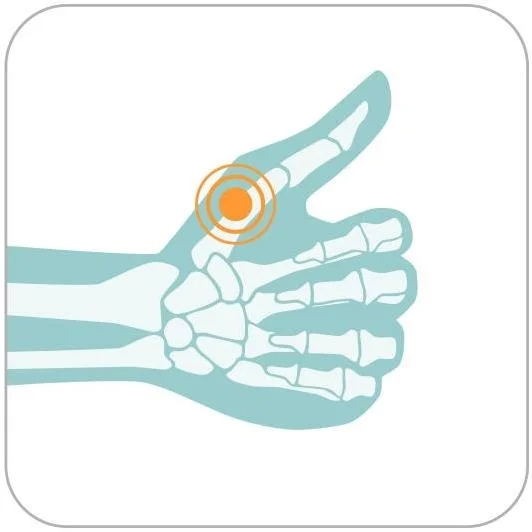
Problem
A manual pipette requires force to depress the plunger, which can lead to complications such as tenosynovitis of the thumb. If the ejection force is excessive, manual tip ejection can lead to the same situation.
What Can You Do?
Select a manual pipette with low plunger force and stroke length. The perfect electronic pipettes are those in which the plunger is controlled by a microprocessor, requiring minimal thumb movement. Utilize tips that necessitate the lowest feasible ejection force for removal.
Solutions
- The electronic pipettes VIAFLO/VOYAGER offer an intuitive thumbwheel design and a single-button plunger control. Press the button with no effort to aspirate and dispense.
- Manual EVOLVE pipettes are lightweight and have a low plunger force.
- The VIAFLO 96/384 electronic pipette provides a computer-controlled plunger and electronic tip ejection, drastically reducing pipetting time.
- GripTip pipette tips have the industry’s lowest ejection forces.
- The ASSIST pipetting robots automate handheld electronic pipettes to eliminate manual operations that are repetitive in nature.
Hand
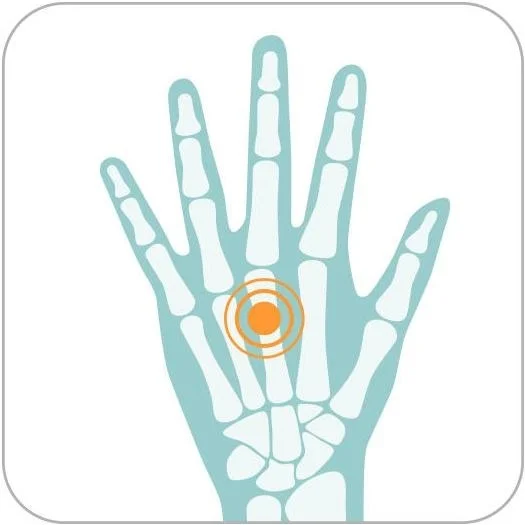
Problem
Long-lasting hand pain can arise from hammering on tips. In addition, squeezing the pipette excessively tightly for lengthy periods of time might cause nerve damage and even carpal tunnel syndrome.
What Can You Do?
Choose a pipette with a finger hook for hand support and minimal tip loading forces to reduce the need to pound on tips. Do not grasp the pipette with excessive force.
Integra Solutions
- The pipetting robot ASSIST PLUS has automatic tip loading and removes the pipette from the user’s hands.
- The GripTips on EVOLVE manual pipettes and VIAFLO/VOYAGER electronic pipettes snap onto the tip without the need for hammering.
- Manual EVOLVE pipettes provide a low plunger force and are lightweight.
- In addition to enabling electronic tip loading, the VIAFLO 96/384 electronic pipette considerably decreases the amount of time required by dispensing/mixing a full plate at once.
Wrist
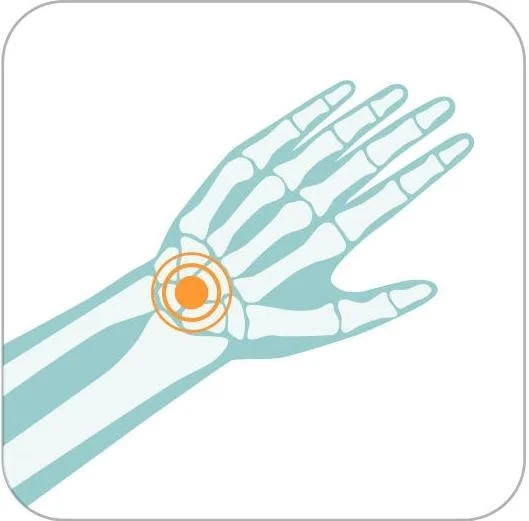
Problem
Twisting and rotating the wrist excessively and regularly can cause muscular injury. Particularly problematic is bending the wrist, which places it in an awkward position.
What Can You Do?
Choose a pipette that allows for simple volume adjustments and maintains a neutral wrist position. Rotatable pipette handles facilitate this by allowing the user to select the most comfortable position.
Integra Solutions
- The handles on VIAFLO/VOYAGER electronic pipettes are rotatable so that the user can determine the most comfortable position. Utilizing a comfortable thumbwheel, volume adjustments may be made with ease.
- The VIAFLO 96/384 electronic pipette can be used in automatic mode, reducing the amount of time and wrist motions needed for manual operation.
- Manual EVOLVE pipettes feature three independent dials for uncomplicated volume adjustments, as opposed to the conventional method of twisting the plunger. This enables rapid volume adjustments without wrist strain.
- The ASSIST pipetting robots automate electronic handheld pipettes, eliminating the requirement for wrist movement. A user-friendly application performs all liquid handling operations including volume adjustments.
Neck and Shoulders
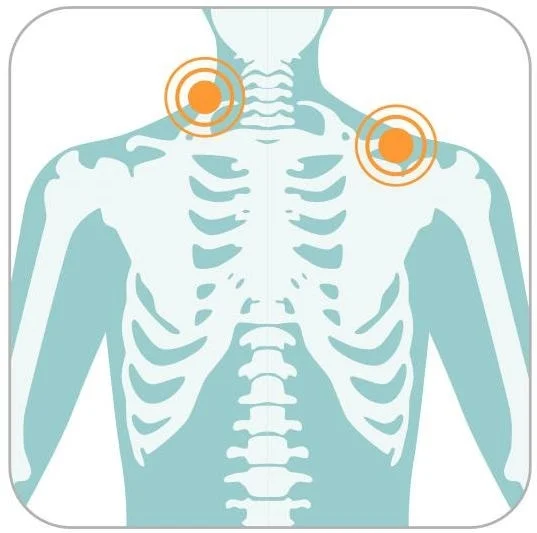
Problem
When pipetting for extended periods of time, the shoulders and neck get bent forward. In general, poor pipetting posture can cause stresses and impede blood supply to the muscles. Work in a laminar flow air cabinet is frequently accompanied by an awkward posture.
What Can You Do?
Straighten your back and sit in the middle of your chair/stool with your back straight. The head should be positioned directly above the shoulders, and the shoulders should be parallel to the hips. Consider your posture.
Integra Solutions
- Throughout the pipetting operation, the VIAFLO 96/384 electronic pipette allows you to maintain a relaxed neck and shoulders. The motor-assisted movement of the pipetting head enables a smooth operation, and the electronic tip positioning ensures perfect targeting of the wells even in the absence of visual control.
- The ASSIST pipetting robots eliminate the need for hand pipetting, thereby totally resolving posture difficulties.
Elbow
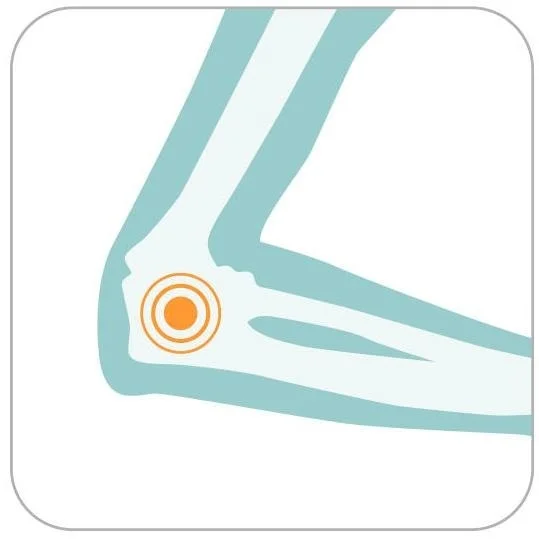
Problem
Lateral epicondylitis, often known as Tennis elbow, can develop with prolonged pipetting, especially when the elbow must be fully extended. While pipetting, resting the elbow on a hard surface might exacerbate the condition.
What Can You Do?
Keep lab equipment as close as possible to the pipetting area, and do not fully extend the elbow.
Integra Solutions
- The VIAFLO 96/384 electronic pipette is constructed so that the elbow is never fully extended to facilitate automation of pipetting activities.
- The ASSIST pipetting robots minimise elbow issues and the requirement for manual pipetting by automating handheld electronic pipettes.
Proper Working Posture
- Pipette labour might be physically demanding, but it’s necessary to take precautions to avoid overusing your muscles, ligaments, tendons, etc.
- Pipetting, whether seated or standing, requires a comfortable operating height. Additional strain on the upper body will result from using a chair that is too short. The person’s back and neck will be strained if they have to lean down to reach it. When operating at a height that is too high, the shoulders and arms are forced to be in a strained position.
- A comfortable chair is required for prolonged pipetting sessions. So that they may go closer to the task at hand, there needs to be adequate room for their legs to move under the desk. It’s important that the chair be adjustable so that a healthy posture can be maintained while working. A footrest is necessary if, even with the seat adjusted to the correct height, the feet do not rest comfortably on the floor.
- The wrist shouldn’t be locked in any unusual positions. The pipette hilt’s design may cause the user to hold their wrist in an awkward position.
- The thumb of the user shouldn’t have to exert a lot of force when using a well-made pipette.
- Workstation components should be arranged to promote healthy posture. The height and placement of containers holding solutions and samples should be adjusted such that the user is not need to bend over, stoop, or twist excessively.
Hazards Of Repetitive Pipetting
Pipetting is a routine job that lab personnel do again and over again. Researchers have found that the likelihood of acquiring upper limb disorders increases with the duration of time spent performing the task of pipetting. Change up your routine to avoid the negative consequences of repetitive pipetting. You may include breaks and activities that call for different postures. The most productive work schedules include short, frequent breaks rather than long, infrequent ones. Switch back and forth between several activities. Repetition can also be minimised by using an electronic pipette or a multi-pipette.
Optimally Designed Pipette
Pipettes should not require excessive force to function; the plunger can be difficult to manipulate if excessive power is required. Liquids with a high viscosity may also require a robust action. Therefore, pipettes with a shorter plunger are ideal, as they take less effort. The movement of depressing the plunger should be smooth, and minimal force should be used to hold the pipette. Textured materials or tiny ridges can lessen the amount of effort required to hold the pipette. Using an electronic pipette is the most effective approach to reduce the amount of force required. However, because they are heavier, they may cause discomfort when held for extended periods, whereas the electronic counterparts need less effort to operate.
Choose the Proper Pipette
Since numerous pipettes are available on the market, the chosen pipette must be simple to use and facilitate safe and secure pipetting. The following guidelines will assist in selecting an appropriate pipette:
- The pipette must be lightweight and padded or moulded to the individual’s hand.
- Choose a pipette with a trigger that can be activated by fingers rather than the thumb.
- Select a plunger with a short travel distance and low spring pressure.
- The correct size pipette should be selected. If the hand covers less than half of the pipette when wrapped around, the pipette is too large; if the hand completely encircles the pipette, it is too tiny.
- A small amount of force is required for the tip ejector, and thin-walled tips are easily ejected. When possible, pipette-specific tips may also be utilised.
References
- https://uhs.berkeley.edu/facstaff/ergonomics/laboratory/pipettes#:~:text=Ergonomic%20pipettes%20differ%20from%20traditional,to%20perform%20the%20pipetting%20task.
- https://www.eppendorf.com/IN-en/applications/physiocare-ergonomics/physiocare-products/pipetting/
- https://www.news-medical.net/whitepaper/20190909/Why-Ergonomic-Pipetting-in-a-Laboratory-is-Important.aspx
- https://www.news-medical.net/whitepaper/20170510/Ergonomics-of-Pipette-Use-and-Handling.aspx
- https://www.integra-biosciences.com/global/en/stories/why-you-should-care-about-ergonomic-pipetting-your-lab
- https://www.sartorius.com/en/products/pipetting/pipetting-dispensing-ergonomics
- https://risk.arizona.edu/sites/default/files/pipettingergonomics.pdf
- https://www.thermofisher.com/in/en/home/life-science/lab-plasticware-supplies/lab-plasticware-supplies-learning-center/lab-plasticware-supplies-resource-library/fundamentals-of-pipetting/ergonomics-of-pipetting.html
- https://www.mt.com/in/en/home/library/white-papers/rainin-pipettes/ergonomics_of_pipetting.html
- https://safetyservices.ucdavis.edu/units/occupational-health/ergonomics/lab/pipette
- https://vistalab.com/blog/
- https://www.gilson.com/default/learninghub/post/pipetting-ergonomics-general-recommendations-to-improve-your-comfort-in-your-lab.html
- https://www.artel.co/embracing-ergonomic-pipetting-technique/
- https://www.artel.co/learning_center/pipette-use-and-ergonomics/
- https://sg.vwr.com/cms/webinar_ergonomic_pipetting
- https://www.andrewalliance.com/wp-content/uploads/2016/10/AN_Pipetting_Ergonomics_V2_HD_20161005.pdf
- https://www.labmanager.com/lab-health-and-safety/tips-for-ergonomic-pipette-use-and-handling-19905
- https://pubmed.ncbi.nlm.nih.gov/21673445/
- https://www.slideshare.net/vistalabtechnologies/ergonomic-pipette-research
- https://www.thomassci.com/scientific-supplies/Ergonomic-Pipette
- https://laboratorytalk.com/article/2030205/improving-ergonomic-pipetting-in-the-lab
- https://ergonomics.ucla.edu/laboratory-ergonomics/tips-for-pipetting
- https://www.labbulletin.com/articles/integra-improving-ergonomic-pipetting-the-lab
- https://www.scientistlive.com/content/improving-ergonomic-pipetting
- https://biotix.com/innovation/ergonomics/
